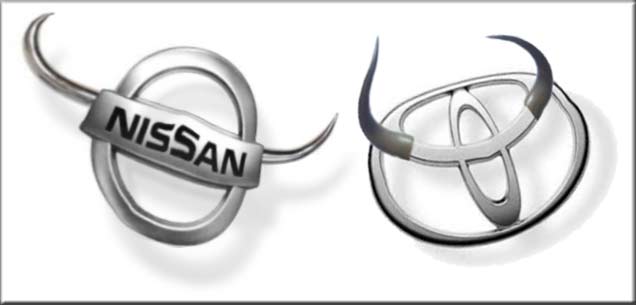Why dwell so much on “maintenance, consumption and spares”. Is this all that we see in a car? A money pit, a bottomless chasm into which disposable incomes go without ever coming out? If these things bother you, why not take the bus?
Nissan vs Toyota: FUEL CONSUMPTION
You will never hear a bus conductor asking you to pay for spares, or maintenance, or to compensate for the driver’s heavy foot. What is the difference in fuel consumption between a Sylphy and a Corolla (None!). What is the difference in parts costs between a Premio and an Allion (None!). Between a CRV and a RAV4, which one makes sense (They both do, close your eyes and pick one!).
The above calculation just goes to show how little Kenyans in general think, no matter how long and how hard I rant here. It also shows that it doesn’t really matter what car you buy; what matters is what you do with it and how well you take care of it.
There are people who own and drive reputably “unreliable” cars but have never done anything more than replace consumables and perform the requisite service at the right interval, and those cars run like clockwork.
There are others who drive Toyotas that spend three days a week at the garage, two days on the road and two days parked at home. People spend anything from Sh. 600,000 upwards buying a car, so what is this about “cost of spares” that worries them so much?
So maybe the control arm of a Mazda Demio costs Sh. 8,500 while that of a Toyota Passo perhaps costs Sh. 6,000: does this mean that you will buy the Passo? If you are spending half a million shillings on a car, what is Sh. 2,500 here or there?
And how often do you plan to break your control arms anyway? The Demio is the better car, no doubt about it; but buying the Passo because it has cheaper control arms beats sense. However, that is the Kenyan mindset.
Nissan vs Toyota: TOYOTA CARS
Speaking of Toyotas: of the two factions I discussed, I would lean towards the second. Used Toyotas are a rip-off, especially if it comes with an “ex-Japan” label.
These cars are supposed to be dirt cheap, but when demand soars, dealer mark-ups reach for the stratosphere too. When the dealers’ demands go up following client demand, the suppliers in Japan will not sit by and watch money fly out of the window; they, too, will raise the prices accordingly.
Toyota models notorious for this are the first-generation iST, the RunX/Allex and the Premio. Mark IIs used to cost a lot but once their notoriety on the fuel economy front reared its head, you can now get a good (lightly used) example for the same money it costs to buy an “ex-Japan” Passo.
Nissan vs Toyota: *NB: the control arm prices quoted are strictly for demonstrative purposes, but you get the point.








